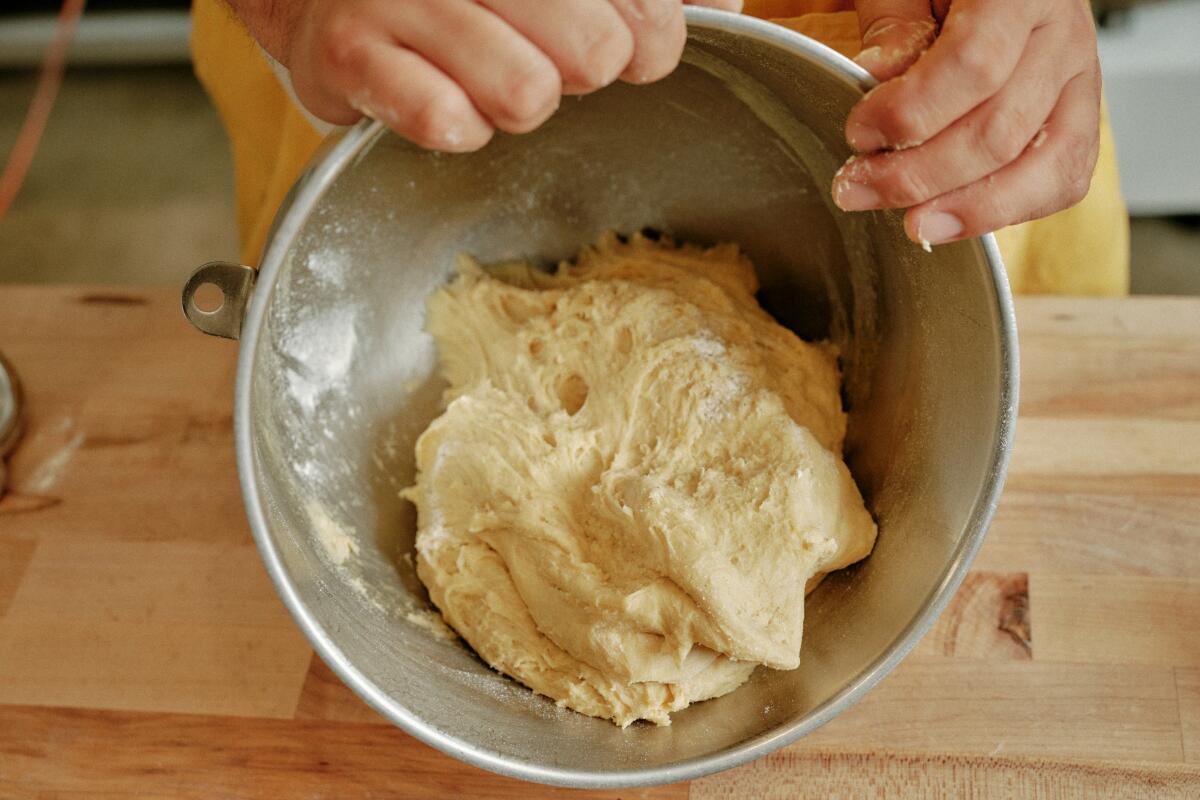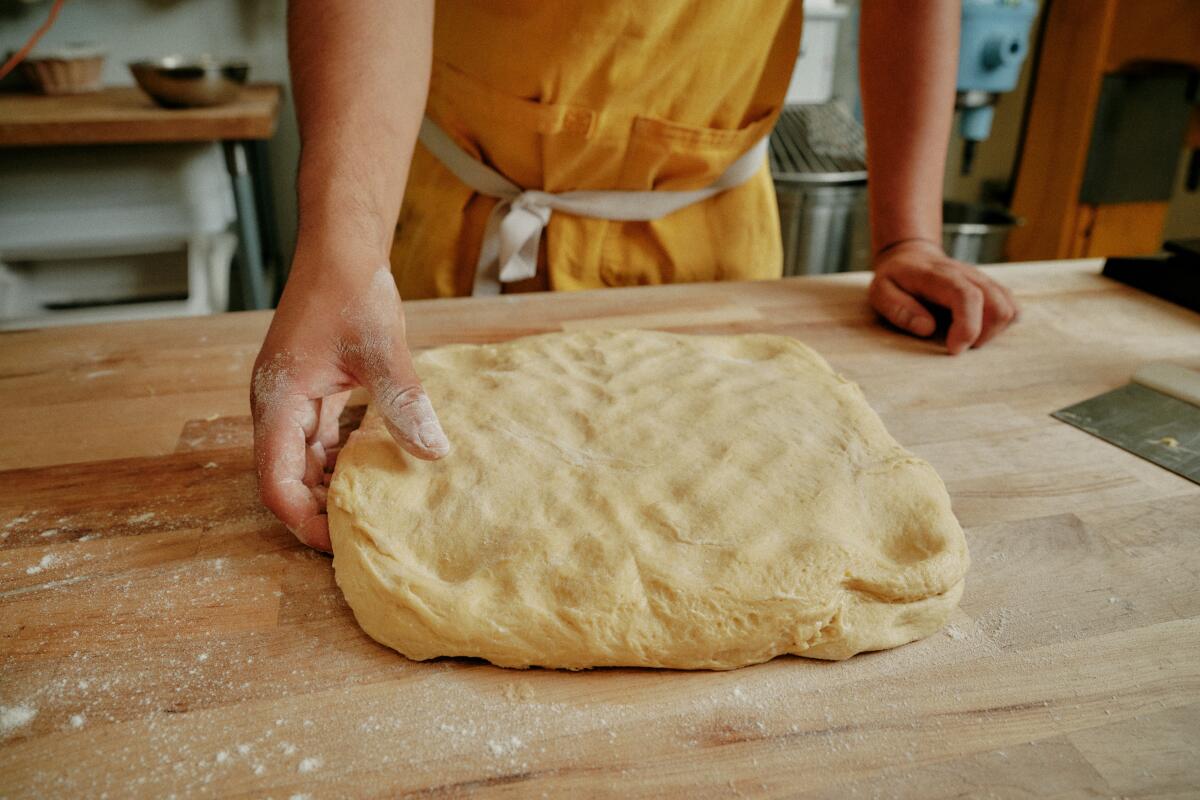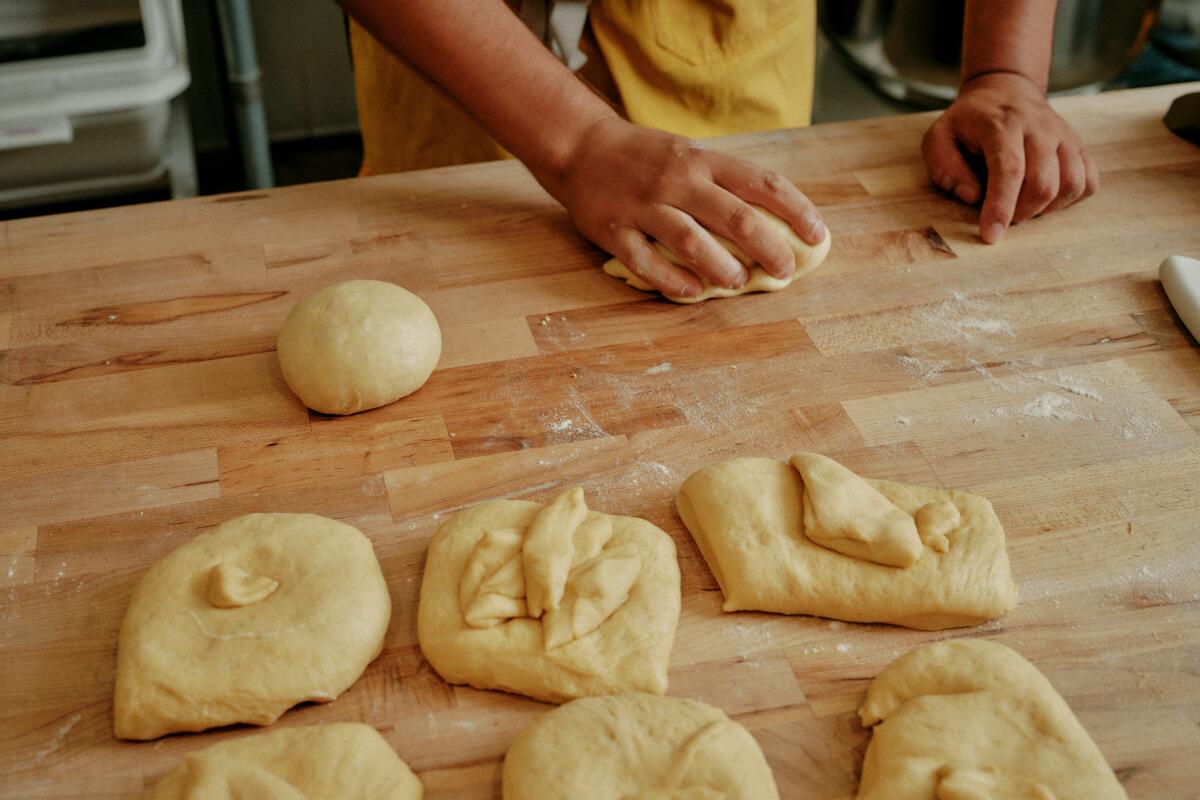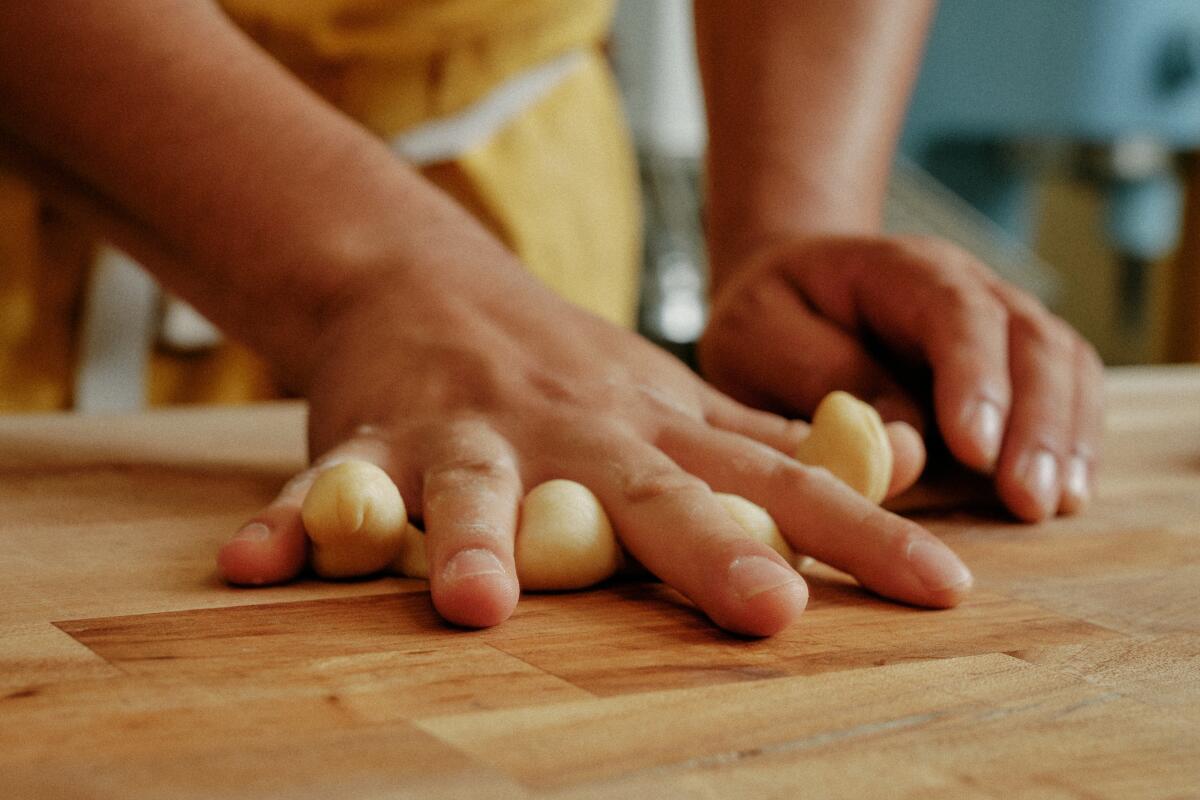Gusto Bread's Pan de Muerto

- Share via
Gusto Bread makes pan de muerto every year in the weeks leading up to Día de Muertos on Nov. 1 and 2. This version incorporates both a yeast sponge (a mixture of flour, yeast and milk) and sourdough starter; if you don’t have your own, you can often purchase it from local bakeries. (This recipe also works with the yeast sponge alone.)
These are bigger than what the bakery sells, making six big buns. The shaping of the “huesos,” or “bones,” that decorate the tops takes a little practice, but they don’t have to be perfect. You can also create twisted braids instead of the “bones” to crisscross the pan de muerto. If making “bones,” one of the knobs should be in the center. If making braids, place a small dough ball in the center.
Pan de muerto takes a few hours to make, but much of that time is for allowing the dough to rise. The first rise is for the just-mixed dough. The second is for the shaped buns before they go into the oven.
Once the buns have cooled, brush them with melted better and sprinkle with sugar. At the bakery, it’s sometimes rose, vanilla or yuzu sugar. Eat these the same day they’re made, cutting them into wedges, or place them on your Día de Muertos altar.
Gusto Bread’s Arturo Enciso built his bakery around wood-fired breads, then changed the conversation around Mexican pan dulce. He shows us how to make pan de muerto for the Día de Muertos holiday.
In a mixing bowl, mix the instant dry yeast, flour and milk for the sponge until well incorporated, cover and let rest in a warm area until it nearly doubles in size, about 30 minutes.
When the sponge is ready, transfer it to the bowl of a stand mixer with the paddle attachment along with ground fennel and orange zest. With the mixer on low speed, slowly add the eggs and yolks to the sponge along with ½ cup sourdough starter until just combined.
Continue to mix on low for 5 minutes while slowly adding the flour and sugar. Once it’s homogeneous, add the salt and mix on medium for 3 minutes. The dough at this point will be fairly sticky and shaggy.

Change to a dough hook, then add the bits of butter little by little until it’s fully incorporated and no butter chunks are visible, kneading for 8 to 10 minutes. Look for a smooth and elastic dough.

Transfer the dough to a large, lightly greased bowl (pan spray works great or you can rub the bowl with a small piece of butter or oil). Keep covered in a warm area where it can rest and rise, until nearly doubled in volume, about 1 hour.
Prepare two baking sheets lined with parchment paper (or greased) and set aside.
Transfer the dough to a lightly floured surface and pat it into a loose rectangular shape.

Using a metal dough scraper or knife, divide the dough into 8 pieces (approximately 250 grams each). Form 6 of the dough balls into round buns: Take one portion at a time and pull and pinch the dough toward the bottom to begin the shape of a round. Place the dough on the floured surface, rounded side up and gently spin it toward you, continuing to tuck and pull the dough underneath to create a smoothly rounded surface on top. Place three of the round loaves on each pan. Set aside.

With the last two dough pieces, make the decorative “huesos” (or “bones”) that go on top of the rounds. Divide each dough ball into 6 pieces so you have 12 total (approximately 40 grams each).
Roll each piece into a small log, each approximately 2 inches wide. With 6 of the logs, spread your fingers and roll the dough toward yourself along the length of your fingers to create four little knobs in between and on the ends. Then with the other 6 logs, roll the dough with two spread fingers to create three little knobs in between and on the ends. Note: You can create as many knobs as you like as long as they extend across the top of each bun. (Each loaf will get 2 criss-crossed “huesos” forming an X shape; see next step.)

Decorate the tops of each round with the “huesos.” Using a damp towel, pat the 6 rounds on the baking sheets and place two “huesos” in an X position on each roll: First lay the one with four knobs and then the one with three knobs with the center knob at the top of the roll. Cover with a clean kitchen towel and let rise until nearly doubled in size, 45 minutes to 1 hour.

Heat the oven to 350 degrees. Bake the bread for 15 minutes, then rotate and turn the pans and bake for another 15 minutes or until deep golden brown (an instant read thermometer inserted into the rounds should read 210 degrees). Remove the pans from the oven and let cool for at least 15 to 20 minutes.
Thoroughly brush the top of each bread with melted butter, getting all sides of the huesos too. Then liberally sprinkle each with sugar for a glittery finish. These should be eaten the same day, or placed on your ofrenda.

Eat your way across L.A.
Get our weekly Tasting Notes newsletter for reviews, news and more.
You may occasionally receive promotional content from the Los Angeles Times.










